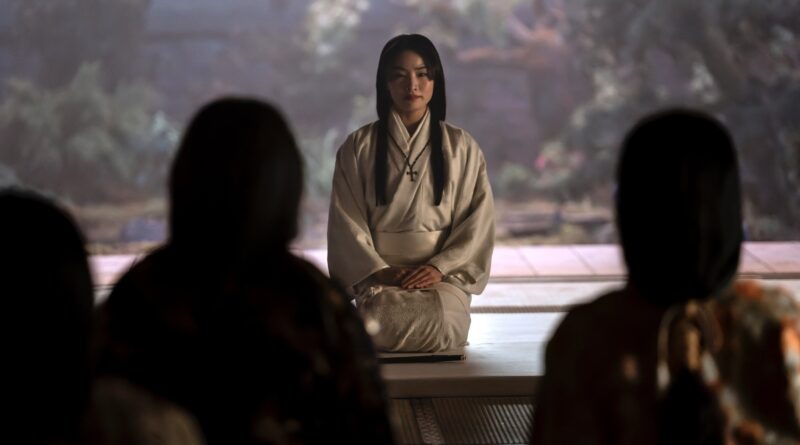‘Shōgun’ writers on saying goodbye to Mariko in ‘devastating’ episode 9
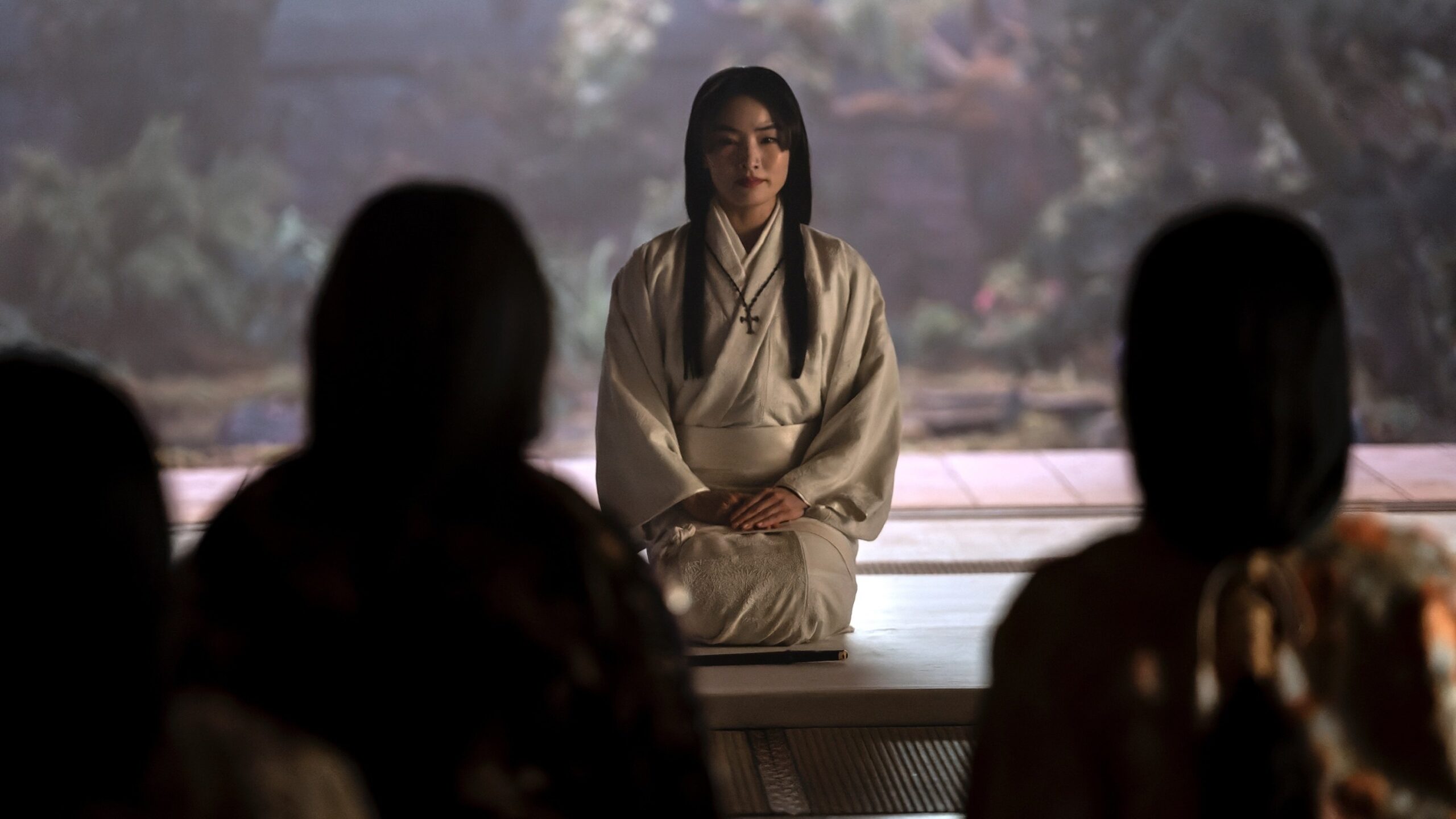
Can’t get Shōgun‘s heartbreaking ninth episode, “Crimson Sky,” out of your head? Imagine living with it for five years.
That’s the case for Rachel Kondo and Caillin Puente, the two writers of the episode. (Kondo is also a co-creator and executive producer on the show; Puente is a story editor and associate producer.) The pair had the responsibility of bringing the most pivotal sequence of James Clavell’s original novel to life, in which Toda Mariko (Anna Sawai) attempts to leave Osaka.
Over the course of the episode, Mariko engineers a diplomatic crisis, undermines Ishido Kazunari (Takehiro Hira), and threatens to commit seppuku, despite pleas not to from both John Blackthorne (Cosmo Jarvis) and Ochiba no Kata (Fumi Nikaido). After facing constant peril, Mariko is finally permitted to return to Ajiro, only to sacrifice herself in a fatal explosion that same night. It’s a wrenching, tragic send-off for one of Shōgun‘s central characters, and after years of discussing it together, Kondo and Puente knew this was the episode they wanted to write.
In a joint interview with Mashable, Kondo and Puente — who described themselves as “Mariko and Ochiba’s number one fans” — dug into why Mariko’s final days resonated so much with them, how they built out her relationship with Ochiba, and the crucial role Sawai played in bringing Mariko to life. The following conversation has been edited and condensed for clarity.
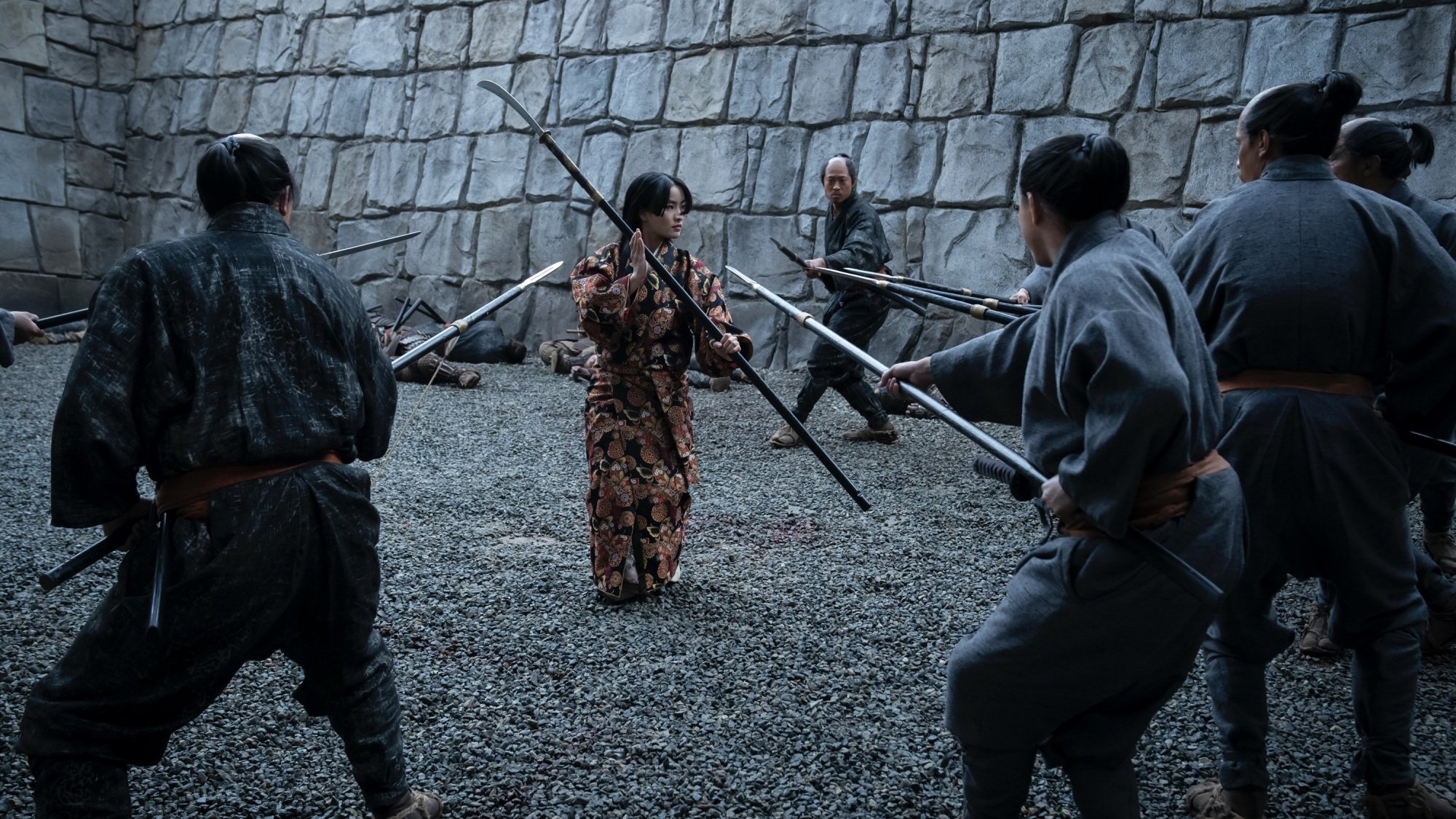
Mashable: What was your first reaction to reading Mariko’s gate sequence and this final arc of her story in the novel?
Rachel Kondo: That sequence felt very much like an action sequence to me while I was reading it in the book. There’s the same degree of tension; there’s almost the same pacing, but with words and refusals. How you capture that in a novel was so beyond my scope of ability, maybe, but I think that the reason why it stuck with me was that you realize, in hindsight, that the whole story hinges on this scene. It builds to this one moment of a woman walking through a gate.
The whole story hinges on this scene. It builds to this one moment of a woman walking through a gate.
Caillin Puente: [There’s a sense of] realizing how amazing this scene is, and this whole section of the story, but then also wanting to approach it from a slightly different angle in terms of bringing Ochiba more into it. This is a character who we hear a lot about through other people’s eyes, but we don’t get to see her, and in the novel, she didn’t have a personal connection to Mariko.
Looking at that scene [in Osaka Castle], at the political theater that Mariko is doing and the diplomacy crisis she’s creating, it seems a bit out of Ishido’s control. So we thought, “Who is capable of going toe-to-toe with Mariko in this fight of words?” And it was Ochiba. She has a great interaction with Mariko in that scene. Then we were like, “How can we expand this? How can we build on these characters’ relationships?”
RK: And how can we imagine the relationship between the two? As Caillin was saying, that relationship didn’t exist in the book, but we assumed that given their rank, they probably knew of each other, if not knew each other. That was one of the more exciting parts of [writing for Shōgun] was to imagine what would have been.
One of the reasons I’m so devastated by this episode is because it ebbs and flows in a way. You think Mariko could die at the gate, and then she doesn’t, and then you think she could die by committing seppuku, and then she doesn’t. But after Yabushige’s betrayal, you realize her death is inevitable. Walk me through the process of constructing the episode and building that tension.
CP: That’s tricky. When you say that, it makes me think of the moment after Mariko’s prepared to commit suicide and then doesn’t. You can feel that for Mariko, it’s the first time that it’s occurred to her that she might survive this. She might be able to accomplish her goals, free these hostages, honor her father, and come out alive. I feel like those few scenes we get with her after that are really devastating, to see her imagine a different future for the first time.
Mariko was always so set in her purpose. She doesn’t waver, even when she’s struggling with it. She knows what she’s signed up for. The way that Anna Sawai performs this scene where she’s trying to escape the castle, knowing that she’s going to get all these people killed — she does such an amazing job.
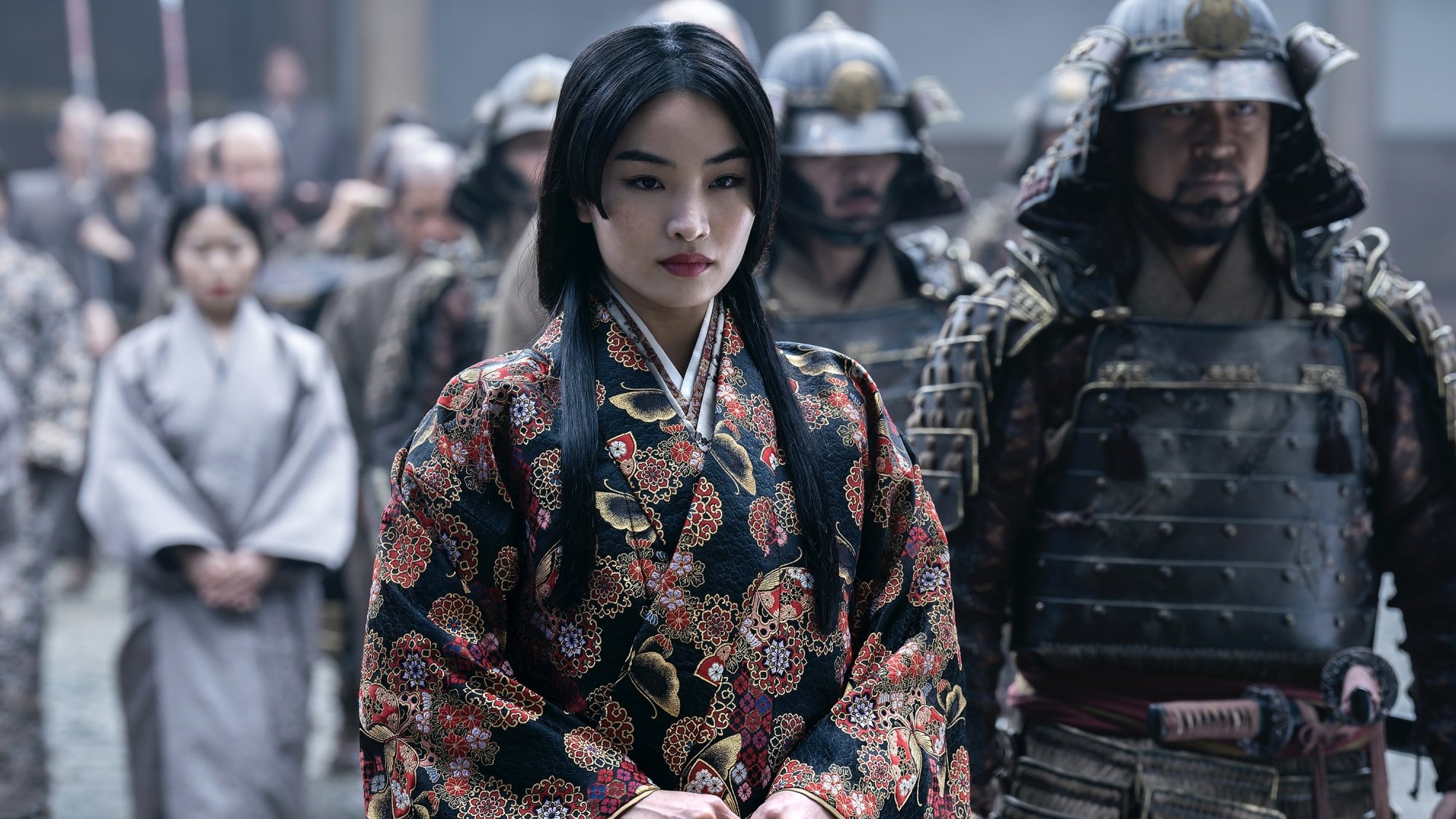
RK: Anna was also laser-focused as she was doing this episode. We were worried for her because it was so much heaviness, and Anna as a person kind of ceased and Mariko took over. It made the celebration once she had wrapped all the sweeter, because Anna came back to us.
I think it’s worth mentioning that it was such a boon for us to be able to shoot in order. I feel like Anna as an actor and artist, and even us, as people who were trying to portray her, we all got better at understanding her. It all culminated in this one stretch. What she brought to the role [during the gate sequence] is the emotional cost of steadfastness. You can see on her face the humanity and the pain and the brokenness, and you can’t imagine that as you’re writing.
Anna [Sawai’s] perspective on Mariko really evolved the character.
CP: Anna’s perspective on Mariko really evolved the character in the story in a way that I think is really interesting. I remember having this conversation with her where we mapped out where Mariko would be wearing her cross visibly above her clothes. In certain scenes, we had this idea that she would tuck it inside of her kosode, like when she’s with Blackthorne and when they’re having this affair where she’s obviously of two hearts. We were thinking that she could put away this side of herself in certain company, especially because Christianity was a complicated thing at that time.
Then very early on, while we were shooting the first episodes, Anna approached us and said, “I think I would be wearing it all the time, even with Blackthorne, even with his hatred of Catholics.” And that makes perfect sense with the final version of Mariko. I can’t imagine her hiding her cross now.
I’d love to hear about her reaction to the episode 9 script. Were there any other details that she added, like with the cross detail?
CP: I don’t remember her initial reaction to reading it, because when she was cast, she got all of the scripts at once.
RK: The reason we’re having a hard time coming up with specific examples is because she basically considered every line of hers and thought about whether Mariko would say it. There was a scene in episode 1 where she’s talking to Fuji about releasing her child. We had written that in a way that she was chiding Tadayoshi in this very cutting manner. And Anna was like, “I think she would be harsh, but not that harsh. She is still a woman of great grace and poise, and it doesn’t feel very Japanese to just slam Tadayoshi.” It made the scene better to cut down whatever harshness we had initially put in.
CP: We talked a lot about the scene with Ochiba in [episode 9]. And I remember Fumi was the one who asked to do the blocking the way they did, where she almost eclipses Mariko and then is facing the opposite direction. They have this conversation where they’re not really facing each other but you get to see both of them.
RK: Which nicely works with the scene when they’re girls looking out for each other’s backs during training.
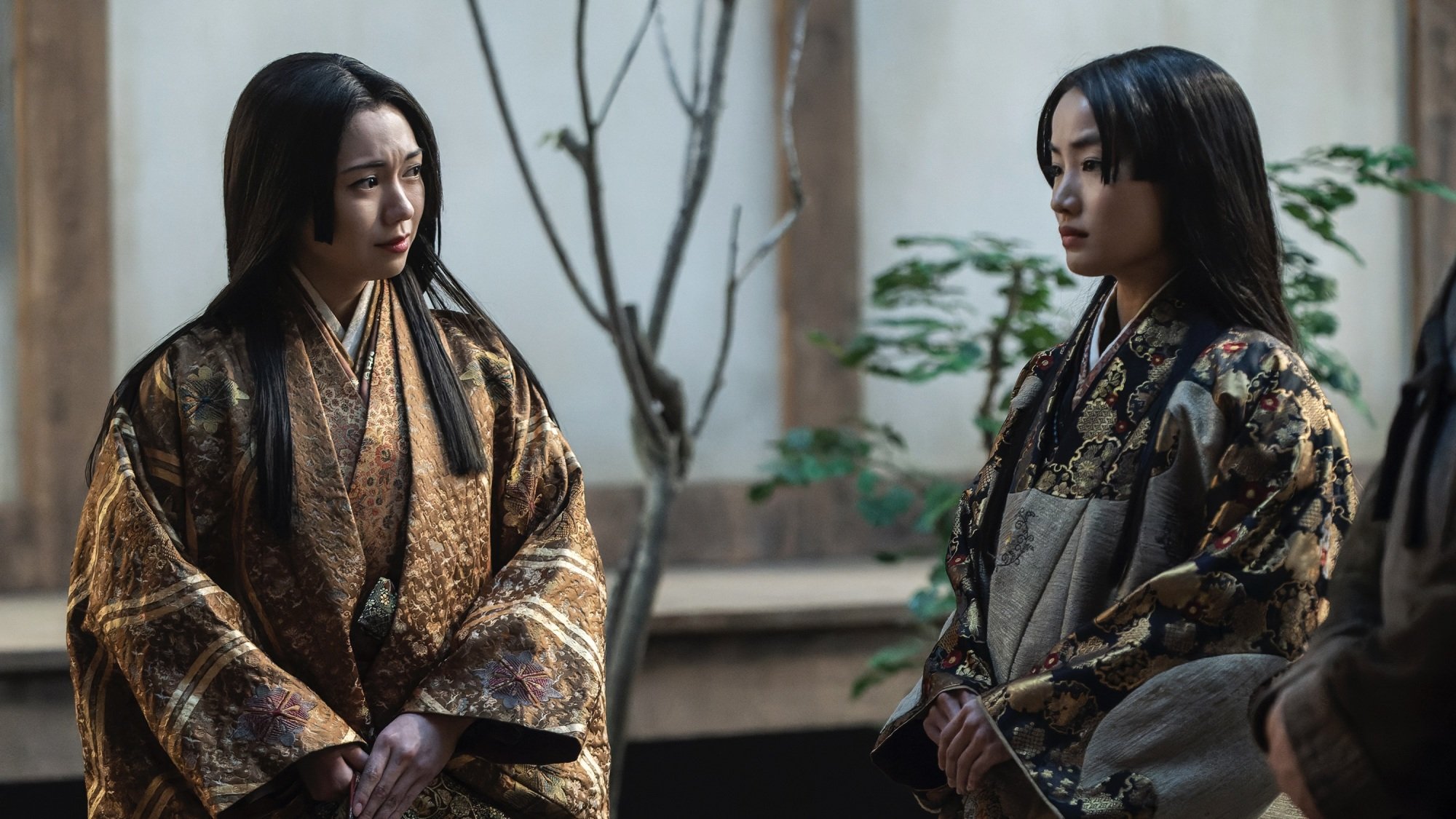
I loved the poetry aspect of the relationship, especially in episode 9. Ochiba asks Mariko for a starting line for a poetry contest, and she says, “While the snow remains veiled in the haze of cold evening, a leafless branch.” In the novel by James Clavell, the line is just “a leafless branch.” Tell me about expanding on that line and writing poetry for these two.
CP: That was interesting, because a lot of the poetry was actually coming either directly from the book or from our primary historian, Professor Frederik Cryns, because that type of poetry is so difficult and getting a poem to translate to be a specific matter for that time is really tricky. A lot of the time, he would come to us with historical references that we would adapt. If it was a line we really liked from the book that was important like “a leafless branch,” he would tailor that a bit more into the Japanese so the translation would work.
One of my favorite [lines in Shōgun] in what Mariko says to Ochiba in the scene they have together, “Flowers are only flowers because they fall.” It’s an adaptation of Mariko’s real-life counterpart Hosokawa Gracia’s real death poem. We slightly butchered the translation, but that was the gist of the poem that we really, really liked. I remember reading that at 3 a.m. while researching and being so excited that this was something that we would get to use. It’s so perfect for the character.
What were some other ways you brought Hosokawa Gracia’s real-life history to Mariko?
CP: There are pieces here and there. For Mariko’s journals in episode 4, when she’s taking notes about Blackthorne, we used Hosokawa Gracia’s real journals to mimic her handwriting. Junko Fuchioka, our calligrapher, and Frederik, who was helping us translate all our historical documents into period feudal Japanese, were using her actual letters to get reference for how she would speak in her letters and what her writing would look like.
There are also some crazy historical anecdotes about Hosokawa Gracia’s relationship with her husband, which we mirror with Buntaro. I think our version is actually a bit less dramatic than the historical version, which is kind of crazy.
RK: What was the story you told me? About the snake and the ogre and the bloody kosode?
CP: There was a lot of strife in their marriage when she converted to Christianity because it was becoming illegal to be a Christian in Japan and the Taikō was expelling Christians. It was a very complicated situation, but she was so high ranking, she was technically allowed.
Her husband actually introduced her to the idea of [Christianity] but then didn’t want her to be Christian. He blamed her ladies-in-waiting for encouraging her, and he ended up killing some of them and wiping his sword on her kosode. She refused to change and just wore this bloody garment for several days until he decided to apologize to her. Then she had this great line — all of this story is stuff of legend so I’m sure it’s not 100 percent accurate — but he called her a snake and she said, “A snake is an appropriate wife for an ogre.”
